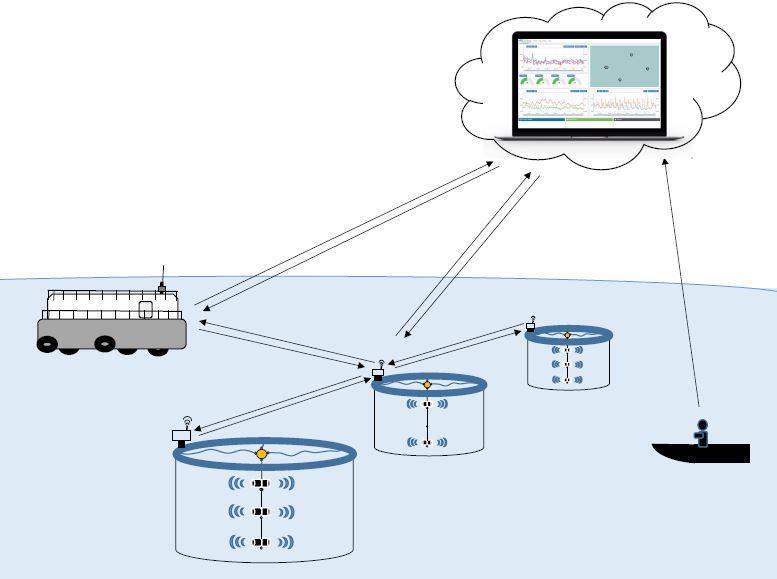What?
LG Sonic, Control Data Systems and Sonic Norway aim to develop the LiceSonic system as a solution for sea lice infestations. Sea lice in open sea aquaculture is the most significant and widespread pathogenic marine parasite, causing health issues to cultured fish and a severe risk for the marine environment. The LiceSonic offers an environmentally friendly, chemical free and low maintenance solution for sea lice control based on ultrasound technology. Our idea is to develop a system that only targets sea lice when they are present in the facility, by combining the technology with fish- and water quality monitoring.
Why?
The economic damage resulting of sea lice exceeds € 1 bln per year globally in reduced production, quality and pharmacological treatment costs. Innovations in sea lice mitigation are desperately needed as the use of bioactive substances is becoming less effective and cannot be further increased as wild salmon populations and the ecosystem need protection. As global consumption of animal protein depends more on fish as a resource, a radical new approach to healthy fish farming is strongly needed.
How?
Ultrasound technology controls sea lice by collapsing gas vacuoles within the larvae (Nauplius) and ultrasonic vibrations cause adult sea lice to release from the fish. To accomplish this, new hardware will be created that will be able to emit ultrasound with a higher amplitude and at different frequencies that are able to control sea lice specifically. In order to do so, the project aims to determine the optimal ultrasonic frequencies and power levels, which perform best for destruction of sea lice. Ultrasonic programs will also be designed to comply with Aquaculture Stewardship Council (ASC) standards for use of ultrasound in marine environment.
During the project, an innovative sea lice management system will be built, which will manage different types of lice and receive direct input of sea lice concentration, through a mobile application. In addition, dissolved oxygen and temperature are included in the decision making process of the management system.
Fish cages are usually remote so the communication protocol is of importance. A communication system will be developed that can transmit data between each fish cage over very long distances, through a mesh network.
Another very important development will be the adjustment of the system towards the open sea. This is due to the presence of strong waves, water flow, salinity and irregular power source.

